Home> Technical Articles> Precision in Motion: The Versatility of Combined Bearings
- AddressNo.1875 East Changjiang Road, New District, Wuxi, Jiangsu,China
- Factory AddressNo.1875 East Changjiang Road, New District, Wuxi, Jiangsu, China
- Worktime9:00-18:00
- Phone(Working Time)86-510-85310167
In the dynamic world of industrial machinery, precision and reliability are paramount. When it comes to achieving seamless motion and optimal performance, the role of bearings cannot be overstated. Among the various types of bearings, combined bearings stand out as a versatile and essential component. This article aims to explore the intricate world of combined bearings, their significance across diverse industries, and the invaluable precision they bring to motion systems.
Understanding Combined Bearings
To comprehend the significance of combined bearings, it is crucial to first understand their design and functionality. These bearings are unique in that they combine different types of rolling elements, such as ball bearings and roller bearings, in a single unit. This amalgamation allows them to accommodate both radial and axial loads, making them ideal for applications with complex force requirements.
The Diverse Applications
Combined bearings find their application in a wide range of industries, from manufacturing and automation to robotics and automotive. Their adaptability and precision make them suitable for tasks that demand high load capacity and precise motion control. Whether it's in a conveyor system, a robotic arm, or a heavy-duty machine tool, combined bearings play a crucial role in ensuring smooth, reliable, and precise movement.
Advantages of Using Combined Bearings
The advantages of utilizing combined bearings go beyond their ability to handle complex loads. These bearings are known for their compact design, which saves space in machinery. They also reduce the need for separate bearing components, simplifying assembly and maintenance. Additionally, their ability to operate at high speeds and under heavy loads makes them a preferred choice in various applications.
Precision in Motion
Precision is the hallmark of combined bearings. Their design allows for minimal deflection, ensuring accurate positioning and minimal wear and tear. In applications where precision is non-negotiable, such as CNC machines or medical devices, combined bearings excel in delivering the required accuracy.
Conclusion
As we delve deeper into the realm of combined bearings, it becomes evident that they are an essential part of modern machinery, contributing to the precision and reliability required across industries. In the sections that follow, we will explore the latest innovations, challenges faced, and sustainable practices in the world of combined bearings. These insights will shed light on the continued evolution of this critical component, driving precision in motion for years to come.
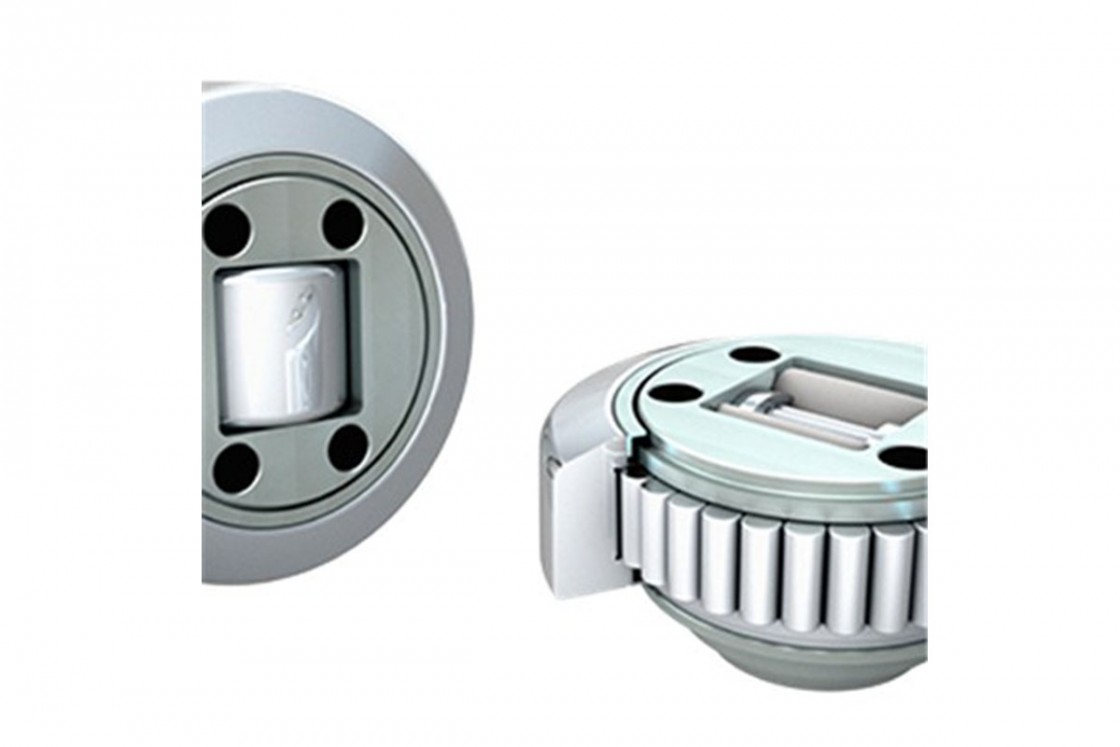
Understanding Combined Bearings
In our quest for precision in motion, it's essential to unravel the intricacies of combined bearings. These remarkable components are the unsung heroes behind the seamless operation of various machinery and industrial applications. In this section, we will delve into the fundamentals of combined bearings, deciphering their unique design, functionality, and the significant advantages they bring to the world of engineering and manufacturing.
The Marvel of Design
Combined bearings are a testament to engineering innovation. Their design is ingenious, as they incorporate different types of rolling elements within a single unit. This amalgamation typically includes ball bearings and roller bearings, strategically placed to accommodate both radial and axial loads. This dynamic design allows combined bearings to excel in applications with complex force requirements, providing a versatile solution for engineers.
The secret behind their exceptional performance lies in the synergy between different rolling elements. Ball bearings, known for their efficiency in handling radial loads, work in harmony with roller bearings, which excel in managing axial loads. This combination ensures that combined bearings can support a wide range of forces, making them ideal for applications where precise and dynamic movement is essential.
Applications Across Sectors
The versatility of combined bearings extends to their wide range of applications across different industries. Their adaptability and precision make them invaluable in various sectors, from manufacturing and automation to robotics and automotive. Let's take a closer look at some of the key applications:
|
Manufacturing and Automation |
In manufacturing, precision is paramount. Combined bearings find their home in conveyor systems, where they ensure the smooth and reliable movement of products. Their ability to handle both radial and axial loads is crucial in maintaining the efficiency of production lines, contributing to higher productivity. |
|
Robotics |
Robots, with their complex movements, rely on combined bearings for precision and flexibility. These bearings enable precise motion control, ensuring that robots can perform tasks with accuracy. Whether it's a robotic arm in an assembly line or a robotic surgical system in a hospital, combined bearings play a crucial role in delivering the desired results. |
|
Automotive
|
The automotive industry demands components that can withstand heavy loads and ensure safety. Combined bearings are used in various automotive applications, from steering systems to suspension components. Their durability and reliability are essential for the smooth operation of vehicles. |
Advantages of Using Combined Bearings
The advantages of utilizing combined bearings extend beyond their ability to handle complex loads. Their compact design saves valuable space in machinery, reducing the need for separate bearing components. This simplicity in assembly and maintenance translates into cost savings for manufacturers. Additionally, combined bearings can operate at high speeds and under heavy loads, making them a preferred choice in various industrial applications.
In summary, understanding combined bearings is key to appreciating their role in the world of precision engineering. Their ingenious design, versatility, and ability to excel in diverse applications make them a cornerstone of modern industrial processes. As we explore further, we will uncover the latest innovations, challenges, and sustainable practices within the combined bearings industry, shedding light on their bright future in precision motion.
Innovative Solutions and Applications
In the dynamic world of engineering and machinery, innovation is the driving force behind progress. When it comes to achieving precision in motion, combined bearings stand at the forefront of innovation. This section will explore the cutting-edge solutions and diverse applications of combined bearings, shedding light on how these remarkable components continue to shape various industries.
Pioneering Innovations
In the realm of combined bearings, innovation is a constant process. Engineers and manufacturers are continuously pushing the boundaries to develop bearings that can withstand ever-increasing demands. Some of the notable innovations in combined bearings include:
Advanced Materials
The choice of materials is crucial in ensuring the longevity and performance of combined bearings. Innovations in material science have led to the development of high-performance alloys and coatings that enhance the durability and resistance of these bearings. Whether it's withstanding extreme temperatures or corrosive environments, advanced materials play a pivotal role.
Integrated Lubrication Systems
Efficient lubrication is essential for the smooth operation of bearings. Innovative solutions in combined bearings include integrated lubrication systems that reduce friction and wear, thereby prolonging the bearing's lifespan. These self-lubricating bearings are a boon in applications where maintenance access is limited.
Enhanced Sealing Technologies
Combined bearings often operate in challenging environments where contaminants and moisture can compromise performance. Innovative sealing technologies, including labyrinth seals and advanced gaskets, provide an additional layer of protection, ensuring the integrity of the bearing and preventing premature failure.
Real-World Applications
To truly appreciate the impact of combined bearings, it's essential to examine their applications in the real world. These versatile components find their place in a wide range of industries, each benefiting from their unique attributes. Let's explore some of the noteworthy applications and case studies:
Aerospace
In the aerospace industry, precision and reliability are paramount. Combined bearings are used in aircraft landing gear systems, where they must withstand extreme loads and ensure a smooth and safe landing. Their ability to handle both radial and axial loads is a crucial factor in aviation safety.
Renewable Energy
The renewable energy sector relies on combined bearings in wind turbines and solar tracking systems. These bearings enable the precise alignment of solar panels and the efficient rotation of wind turbine blades, maximizing energy output and contributing to a sustainable future.
Medical Devices
Medical equipment demands exceptional precision and reliability. Combined bearings play a vital role in medical devices, such as MRI machines and robotic surgery systems. Their smooth and accurate movement is essential for delivering precise medical procedures.
Precision and Efficiency
Combined bearings have become synonymous with achieving precision and efficiency in various industries. Their ability to handle complex loads, coupled with innovative solutions, ensures that machinery operates smoothly and reliably. Whether it's in the skies, on renewable energy farms, or in operating rooms, combined bearings continue to make a difference.
Challenges and Solutions
As we delve deeper into the world of combined bearings, it's crucial to understand the challenges that industries often encounter when utilizing these versatile components. This section will not only identify these common challenges but will also shed light on innovative solutions, best practices, and the pivotal role of research and development in enhancing combined bearing technology.
Identifying Common Challenges
Load and Misalignment
Combined bearings often operate in conditions where they experience high loads and misalignments. This can lead to premature wear and reduced bearing lifespan, posing a significant challenge to industries relying on their performance.
Lubrication and Contamination
Efficient lubrication is vital for bearing operation. However, maintaining proper lubrication in combined bearings, especially in complex applications, can be challenging. Contamination, such as dust or debris, can also compromise bearing performance.
Corrosion and Environmental Factors
In harsh environments or industries with exposure to corrosive substances, combined bearings may face corrosion-related challenges. The impact of environmental factors, including temperature extremes, further complicates their operation.
Mounting and Maintenance
Improper mounting and inadequate maintenance practices can lead to bearing failures. Industries often struggle with ensuring correct installation and ongoing maintenance, impacting the reliability of combined bearings.
Innovative Solutions and Best Practices
Advanced Materials and Coatings
Manufacturers are developing advanced materials and coatings to enhance combined bearing performance. These innovations include corrosion-resistant materials and specialized coatings to reduce wear.
Lubrication Technologies
Innovative lubrication technologies, such as automated lubrication systems and self-lubricating bearings, are becoming more prevalent. These solutions ensure consistent and efficient lubrication even in challenging conditions.
Bearing Seals and Protection
Improved sealing and protection mechanisms help prevent contamination and maintain bearing integrity. Industries are adopting innovative seal designs to extend bearing life.
Training and Maintenance Programs
Investing in employee training and implementing regular maintenance programs are crucial. Proper training ensures correct mounting and maintenance practices, reducing the risk of premature failures.
The Role of Research and Development
Research and development (R&D) play a pivotal role in addressing challenges related to combined bearings. R&D efforts focus on:
- Advanced Materials: Developing materials that can withstand extreme conditions and resist corrosion.
- Enhanced Lubrication: Creating lubrication solutions that require less maintenance and perform optimally in diverse environments.
- Smart Bearings: Exploring the integration of sensors and monitoring systems within bearings for real-time performance tracking.
In conclusion, while combined bearings offer versatility and efficiency, they are not without their challenges. However, through innovative solutions, best practices, and ongoing research and development, these challenges can be mitigated. Industries that utilize combined bearings can benefit from enhanced performance, longer lifespans, and improved reliability, ensuring that precision in motion remains at the forefront of their operations.
Sustainable Bearings: Eco-Friendly Practices
In an era where environmental consciousness is paramount, industries worldwide are seeking sustainable solutions in every aspect of production. The world of bearings is no exception, and this section will delve into the eco-friendly practices associated with combined bearings. We'll explore the environmental impact, sustainable initiatives, and the growing significance of eco-friendly bearing solutions.
Assessing Environmental Impact
The manufacturing and usage of bearings, including combined bearings, have an environmental footprint. It's essential to understand how these components impact our ecosystem to initiate change. Some key aspects to consider include:
Materials Selection
The choice of materials for bearing manufacturing greatly influences their environmental impact. Sustainable practices involve opting for materials with a lower carbon footprint and a reduced use of non-renewable resources. Recycled and eco-friendly materials are gaining traction in the industry.
Energy Efficiency
The production processes involved in bearing manufacturing can consume substantial energy. Sustainable manufacturers prioritize energy-efficient production methods, reducing carbon emissions and conserving resources.
Life Cycle Assessment
An eco-friendly approach involves conducting a life cycle assessment (LCA) of bearings. This assessment evaluates the environmental impact at each stage, from raw material extraction to disposal or recycling. Sustainable bearings aim to minimize negative impacts across their life cycle.
Sustainable Initiatives
The combined bearings industry is actively embracing sustainability through various initiatives:
|
Recycling Programs
|
Manufacturers are increasingly implementing bearing recycling programs. This practice involves collecting used bearings, refurbishing them, and putting them back into service. It reduces waste and conserves resources. |
|
Recycling Programs
|
Lubrication is vital for bearings, but traditional lubricants can harm the environment. Sustainable solutions include biodegradable and eco-friendly lubricants, reducing the ecological footprint of bearing operation. |
|
Eco-Design
|
Eco-design principles focus on creating bearings with a reduced environmental impact. This includes optimizing bearing designs for energy efficiency, durability, and recyclability. |
The Significance of Eco-Friendly Bearings
In a world increasingly concerned about climate change and sustainability, the importance of eco-friendly bearing solutions cannot be overstated. Bearings play a crucial role in various industries, and their eco-friendly transformation aligns with global efforts to reduce environmental harm.
Eco-friendly bearings not only reduce carbon emissions but also contribute to a positive brand image for companies adopting sustainable practices. Customers and industries are increasingly seeking suppliers that prioritize environmental responsibility.
As we conclude this exploration of sustainable bearings, it's evident that the combined bearings industry is making significant strides towards eco-friendliness. The journey towards greener practices ensures a more sustainable future for industries worldwide, where precision in motion aligns harmoniously with environmental stewardship.

Conclusion
In the world of precision in motion, combined bearings stand as a testament to versatility and efficiency. As we conclude this exploration into the realm of combined bearings, let's recap the key takeaways that highlight their significance and potential in various industries.
Embracing Versatility and Precision
Combined bearings have showcased their adaptability across diverse applications. Their unique design allows them to excel in situations where traditional bearings may fall short. From heavy machinery in industrial settings to intricate machinery in aerospace, combined bearings provide precision in motion that is unparalleled.
A Solution for Complex Challenges
The challenges of load-bearing, misalignment, lubrication, and environmental factors are met with innovative solutions. Advanced materials, lubrication technologies, and improved seals ensure that combined bearings can thrive in demanding conditions. This adaptability not only solves current challenges but also opens doors to new possibilities.
The Role of Research and Development
Research and development continue to be the driving force behind the evolution of combined bearings. Ongoing efforts in material science, lubrication advancements, and smart bearing technologies promise a bright future. With each innovation, combined bearings inch closer to perfection in motion.
A Promising Future
As industries evolve and demand precision in their machinery, combined bearings are poised to play an increasingly vital role. Their ability to handle complex challenges and provide efficiency makes them indispensable. The future holds even greater potential for combined bearings, with advancements on the horizon that will further revolutionize their applications.
In conclusion, precision in motion is not just a concept but a necessity in today's industrial landscape. Combined bearings embody this precision with their adaptability and efficiency. Their journey continues to be one of innovation and growth, and as industries evolve, so too will the versatility and precision of combined bearings, ensuring that they remain at the forefront of modern machinery.
FAQs: Common Questions About Combined Bearings
What Are Combined Bearings?
Combined bearings, also known as combination bearings or track roller bearings, are specialized bearings that integrate multiple rolling elements into a single unit. These elements typically include needle rollers, cylindrical rollers, or ball bearings, combined with an outer race or guide.
Where Are Combined Bearings Used?
Combined bearings find applications in a wide range of industries, including material handling, automotive, robotics, and manufacturing equipment. They are commonly used in linear motion systems, conveyor systems, and cam mechanisms.
What Sets Combined Bearings Apart From Standard Bearings?
Combined bearings are designed for specific applications that require both radial and axial load-carrying capabilities. They are particularly useful in situations where space is limited, and precise motion control is essential.
How Do Combined Bearings Work?
These bearings work by providing support for both radial and axial loads simultaneously. The integrated rolling elements within the bearing unit ensure smooth and precise motion, making them ideal for linear guidance systems.
What Are the Advantages of Using Combined Bearings?
Combined bearings offer several advantages, including high load-carrying capacity, compact design, ease of installation, and precise motion control. They are also known for their durability and long service life.
Can Combined Bearings Handle Heavy Loads?
Yes, combined bearings are capable of handling heavy loads, making them suitable for applications where substantial radial and axial forces are present. Their robust construction ensures reliable performance under demanding conditions.
Are There Different Types of Combined Bearings?
Yes, there are various types of combined bearings, including needle roller combined bearings, cylindrical roller combined bearings, and ball combined bearings. The choice of type depends on the specific application requirements and load conditions.
How Should I Select the Right Combined Bearing for My Application?
Selecting the right combined bearing involves considering factors such as load capacity, speed requirements, environmental conditions, and the desired level of precision. Consulting with bearing experts or manufacturers can assist in making the appropriate choice.
What Is the Future Outlook for Combined Bearings in Industries?
As industries continue to demand precise and efficient motion control solutions, combined bearings will continue to play a vital role in meeting these requirements. Advancements in materials and design will likely lead to further innovations in combined bearing technology.
Where Can I Source High-Quality Combined Bearings?
High-quality combined bearings are available from reputable manufacturers and distributors worldwide. Sourcing from trusted suppliers ensures the reliability and performance of combined bearings in various applications.
In conclusion, combined bearings are integral components in motion control systems, offering versatility, efficiency, and precision in various industries. Their ability to handle both radial and axial loads makes them indispensable for applications requiring precise linear motion and load-carrying capabilities. As we conclude this section, it is evident that combined bearings will continue to drive innovation and precision in the field of motion control.


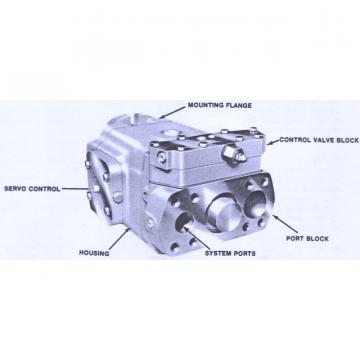 Dansion gold cup piston pump P30P-8L5E-9A4-A00-0B0
Dansion gold cup piston pump P30P-8L5E-9A4-A00-0B0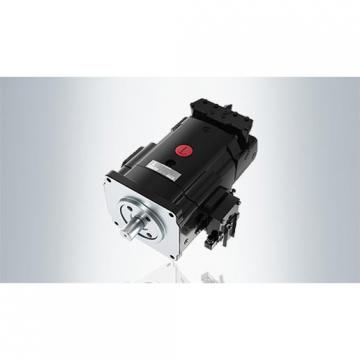 Dansion gold cup piston pump P30P-8L5E-9A2-B00-0C0
Dansion gold cup piston pump P30P-8L5E-9A2-B00-0C0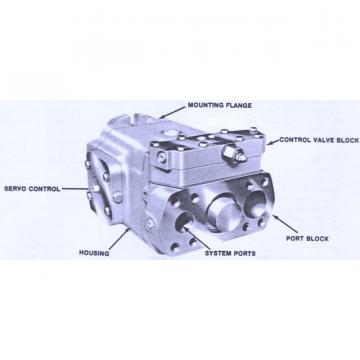 Dansion gold cup piston pump P30L-8L5E-9A7-A0X-B0
Dansion gold cup piston pump P30L-8L5E-9A7-A0X-B0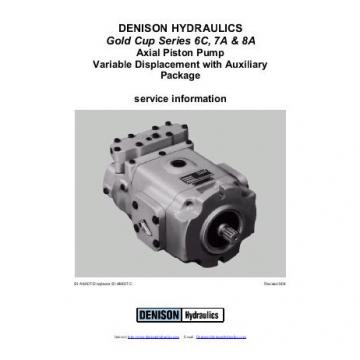 Dansion gold cup piston pump P30P-2R5E-9A7-B00-0C0
Dansion gold cup piston pump P30P-2R5E-9A7-B00-0C0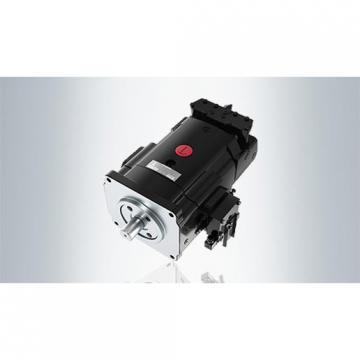 Dansion gold cup piston pump P30L-7R5E-9A2-A0X-D0
Dansion gold cup piston pump P30L-7R5E-9A2-A0X-D0